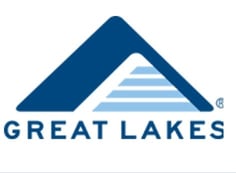Great Lakes Student Loans – Learn How They Work

When the time comes to start paying back student loans, many college grads are surprised to learn that they don’t deal directly with the U.S. Department of Education. The federal government issues billions of dollars of student loans each year, but it doesn’t supervise the repayment of those loans. Instead, it assigns them to a handful of authorized servicing companies that act as go-betweens, processing borrowers’ payments and answering their questions.
Great Lakes Educational Loan Services is one of the nation’s largest servicers, handling about 1 in 4 student loans issued by the federal government. If Great Lakes is your student loan servicer, learning who they are and what resources they offer could save you time and money. Here’s what you need to know about Great Lakes.
About Great Lakes Educational Loan Services
Great Lakes is based in Madison, Wisconsin and has been in business since 1967. It does not originate loans, but instead guarantees them and makes collections on behalf of lenders. Unlike many of its competitors, Great Lakes is a nonprofit corporation and is not publicly traded. Over the past 50 years, it has worked with more than 6,000 colleges and universities and 1,000 private lenders.
Great Lakes is now the second-largest servicer of federal student loans, behind American Education Services (AES). Great Lakes handles about 23% of the U.S. Department of Education’s direct loans, serving approximately 8 million borrowers with debt totaling over $220 billion. However, the volume should not be construed as a measure of popularity. Students have no say in which company manages their loan; servicers are assigned by the government. And like all of its competitors, Great Lakes has been the subject of numerous consumer complaints.
Student debt has been a hot political issue in recent years, as Americans’ outstanding loan balances have continued to surge. Political candidates and elected officials have proposed a wide range of remedies to address ongoing borrower frustration. One major change currently under consideration is to have a single online platform for all U.S. Department of Education loan servicing. Recently, Great Lakes formed a joint venture with Nelnet to bid on the massive contract. The combined entity, called GreatNet, is one of three vendors being considered for the job. The others are Navient and AES/FedLoan.
What does Great Lakes do?
Like all servicers, Great Lakes manages borrowers’ accounts, processes monthly payments, and communicates directly with borrowers about their loans. The company helps borrowers change repayment plans or request deferment or forbearance, if they’re experiencing economic hardship. It also certifies borrowers for loan forgiveness.
After setting up an account on the Great Lakes website, borrowers can use the online portal to check their statements, make payments, change due dates, calculate payoff times, switch payment plans, print tax documents, and more. The company offers a .25% interest rate deduction for anyone who signs up for automatic payments.
Great Lakes also has a mobile app that can send reminders and confirmations. The app is available for both iOS and Android. Reviews have been mixed, but the company has released several updates to address complaints of bugs and limited functionality.
Benefits of working with Great Lakes
The Great Lakes website has a knowledge center to help current students, graduates, and parents navigate debt repayment. It has an archive of articles about loan forgiveness, consolidation, service member benefits, and more. The company’s Facebook and Twitter accounts also serve as sources of information and support.
Great Lakes differs from other loan servicers in that it does have a philanthropic arm. The company has given more than $200 million in grants since 2006 focused on overcoming barriers to graduation. Grants fund research and programs to help students from low-income families, students of color, and students who are first in their families to go to college.
What repayment options does Great Lakes offer?
Loan servicers don’t have much discretion when it comes to designing repayment plans. For federal student loans, they can only offer the payment plans established by the U.S. Department of Education. So like all of its competitors, Great Lakes offers a limited set of repayment options:
- Standard 10-year plan, with fixed payments
- Extended 25-year plan, with fixed payments
- Graduated 10- or 25-year plan, with payments that increase at regular intervals
- Income-driven plans, in which payments are a fixed percentage of the borrower’s income
Great Lakes has an online Repayment Planner tool that shows account holders the effect of different plans, including how much they’d pay monthly and over the life of the loan. But it’s up to borrowers to research their options and request a change. All loans start out on the standard plan.
How does Great Lakes help people who are having difficulty paying their student loans?
If you have a loan (or loans) being serviced by Great Lakes and you’re struggling to make your payments, the first step is to contact their customer service department. All graduates are entitled to a six-month grace period immediately after finishing college, but entry level salaries can be meager and unexpected financial difficulties can arise at any time. If you’re unemployed, underemployed, or experiencing hardship, you might qualify for forbearance or deferment. You might be able to decrease your monthly payments by extending the term of your loan. These are some of the remedies that servicers can offer, but the options are limited.
Great Lakes Contact Information
Office Hours: M-F: 7:00 AM to 9:00 PM (CT)
Phone: 1-800-236-4300
Mailing Address:
Great Lakes
P.O. Box 7860
Madison, QI 53707-7860
Website: https://mygreatlakes.org/educate/
Click here for more information on the other main student loan servicers.
